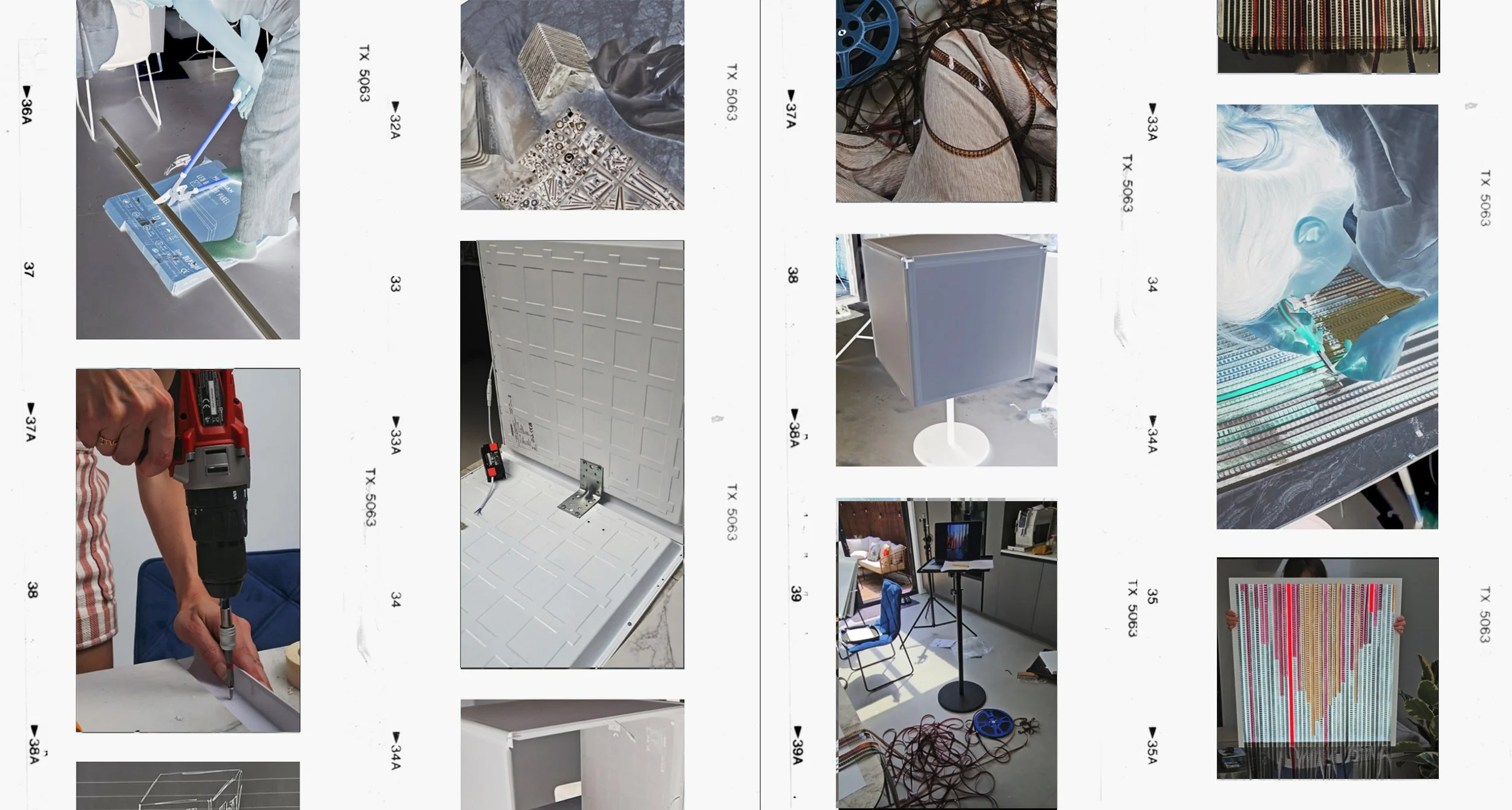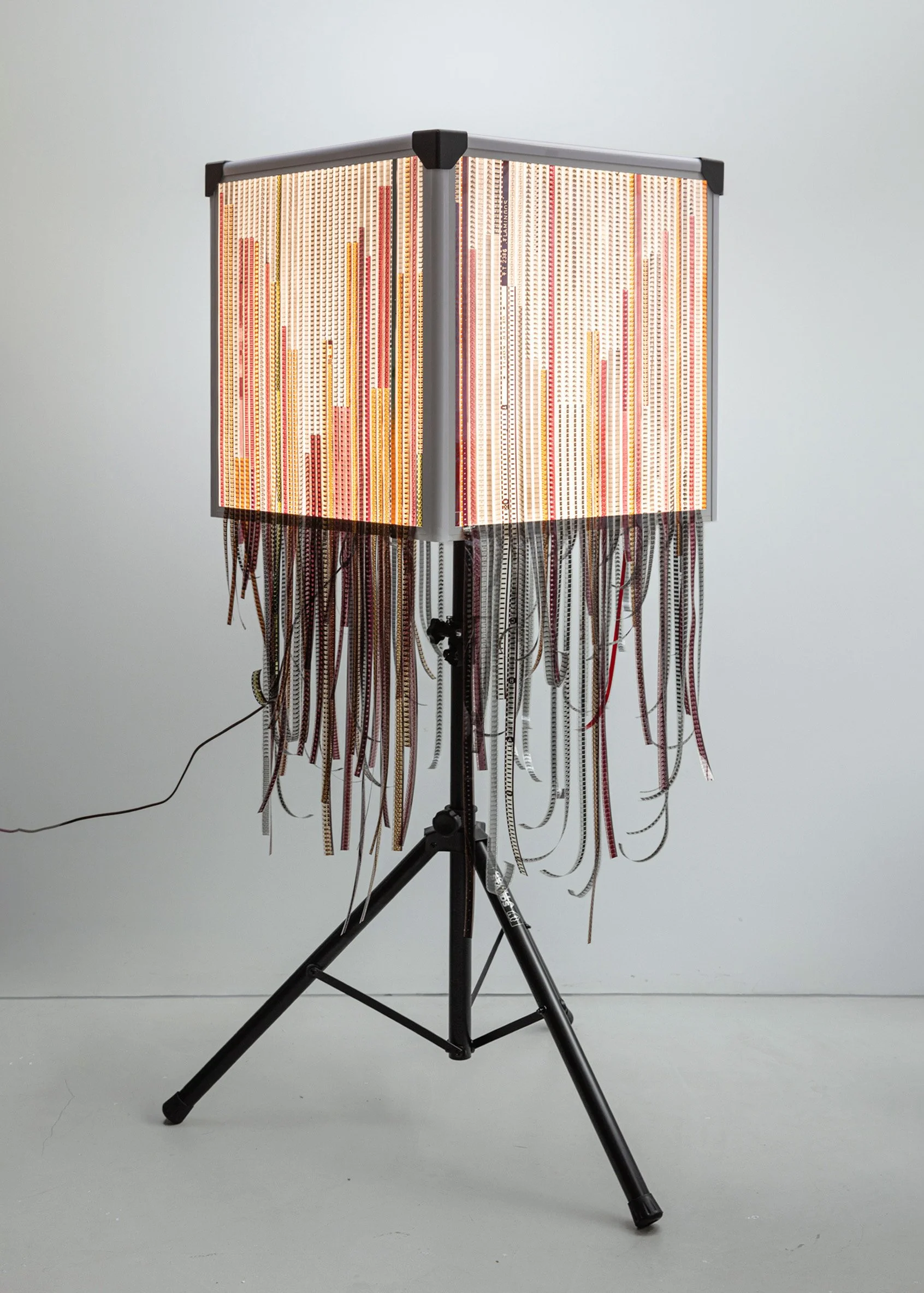I made False Horizons out of a feeling I know too well… When I moved from a rural town to London, I felt sped up and thinned out — early alarms, late nights, the sense that something important was always happening without me. People called it a place where dreams come true. It is. But if you don’t keep hold of yourself, something caves in.
I began missing the slow things: sitting in a garden with nothing to do, the small sounds that don’t ask for attention. The longer I lived here, the more I longed for those textures of nature. So I built a city out of them.
From a distance, the illuminated panels look like a skyline - glitter, promise, towers of light. Up close, through a magnifying glass, you see the truth: the “buildings” are strips of 16mm film, fragments of animals and forests spliced into glow. A metropolis assembled from the memories of the wild.
I made this for Eden: Lost Coordinates because the work sits exactly where I do - between nostalgia and simulation. Screens sell us a kind of paradise; we buy the spectacle and forget the source. By asking you to lean in and really look, I’m inviting a pause, a way back to the inner compass that doesn’t blink. An Eden you can’t enter from far away.
Thinking NotesTrigger: moving from rural quiet to London’s speed; FOMO as an architecture around you.Distance trick: far = skyline; near = nature. Force a physical pause (magnifying glass / phone loop).Material tension: 16mm grain (memory, tactility) vs LED glow (fake, simulation).Source footage: nature documentaries — the “city” built from what it forgets.Eden lens: paradise as projection — visible, elevated, unreachable from afar.Viewer role: step closer to “enter”; recognition arrives only with attention.
How was that built?
〰️
How was that built? 〰️
Beyond the concept, this piece was a lot of hands-on graft and small engineering wins. I had to make the structure strong enough to carry its own weight and clean enough to read as a refined object.
Frame & strength: aluminium profiles with internal corner brackets; lots of drilling, countersinking, and screwing to lock the cube square. I added PVC corner trims, which I cut and fitted to soften edges and hide fixings without adding bulk.
Panels & diffusion: test-fitted the diffusion acrylic so the LEDs glow evenly (no hotspots) and the “towers” keep their edges from a distance.
Mounting the film: precise spacing and clear mounts so the 16mm strips sit like vertical “windows” without sagging.
It took patience and a lot of drilling, screwing, and trimming—but the result feels solid and considered.
This idea didn’t arrive from nowhere. A year ago I built a small lightbox for my bedroom using 16mm film — a sentimental keepsake of our trip to New York. It taught me two things:
from a distance, strips of 16mm laid side by side read like skyscrapers with tiny windows, repeating a calm, obsessive pattern;
New York is the perfect shorthand for urban velocity — instantly recognised, instantly felt.
For False Horizons, I scaled that intuition into a cube for two reasons. First, four faces for the four directions — north, south, east, west. Like standing at a busy crossroads: whichever way you turn, there are buildings. The form gives the “city” a physical presence; you have to walk around it to find where the light softens, where the “sun” sets. Second, a cube is a basic unit of simulation — a building block in virtual worlds (think Minecraft). I wanted that tension: the most elemental digital shape filled with the most tactile, analogue material.
I built a city from the memories of my essenceThe illusion behaved exactly as I hoped and the months of work paid off. It took me three months to engineer and assemble this cube, and at Platforms Project (Athens) it became a small magnet: people queued to get close, circling it, leaning in with the magnifier. Even architects stopped to compliment the idea and the build. I didn’t expect that much attention, but it filled me with real joy to see how quickly people connected with it.
What I love most is the tension that stays in the room: 16mm grain breathing against the LED glow — memory set against display. You can’t enter this “Eden” from afar; you have to come closer, slow down, and choose to see what the spectacle is made of. That small ritual of attention is the point and, I think, this is why it resonated.





